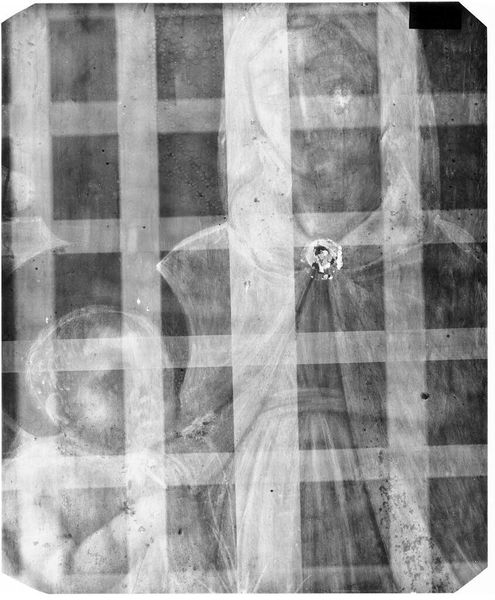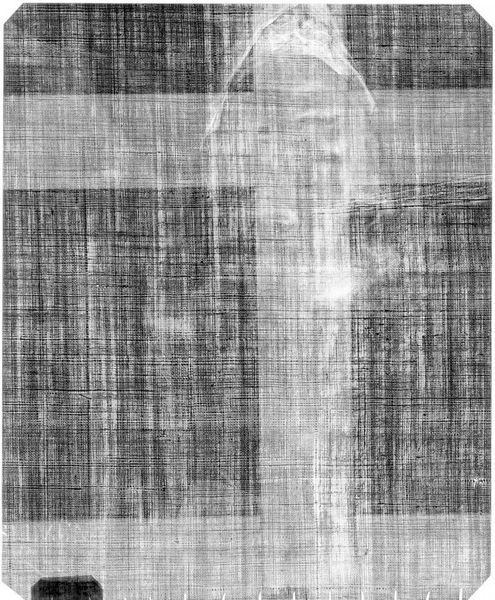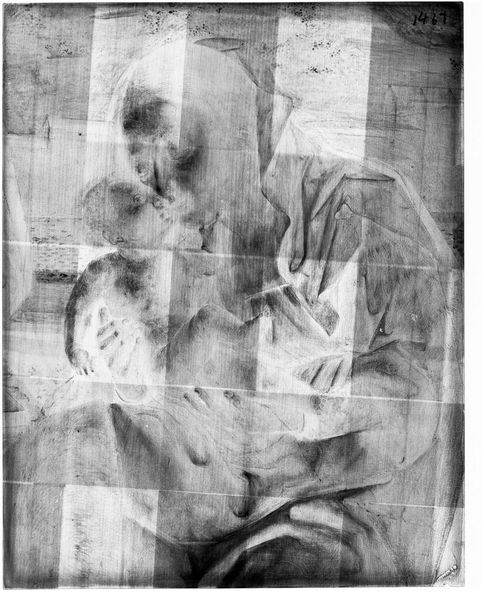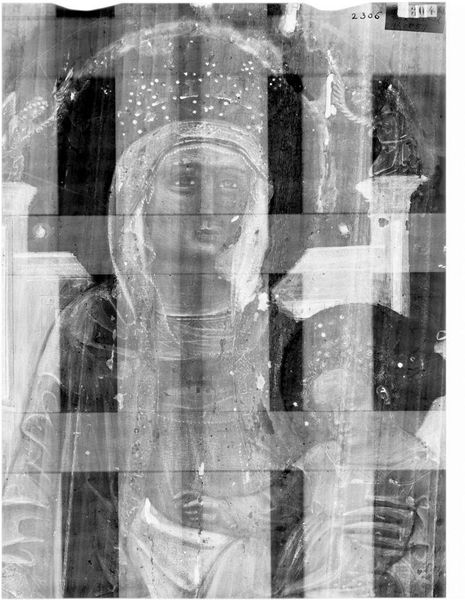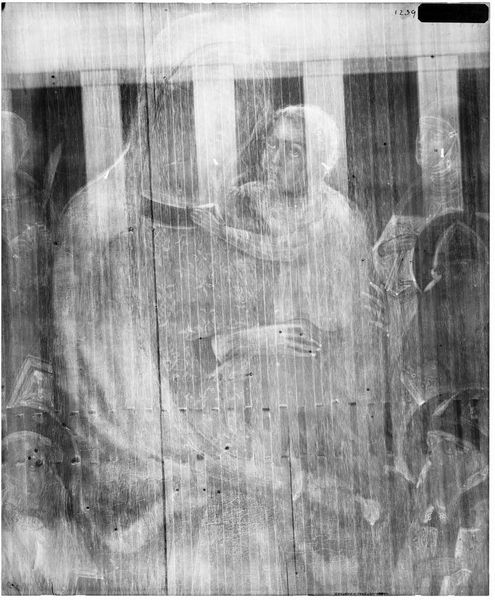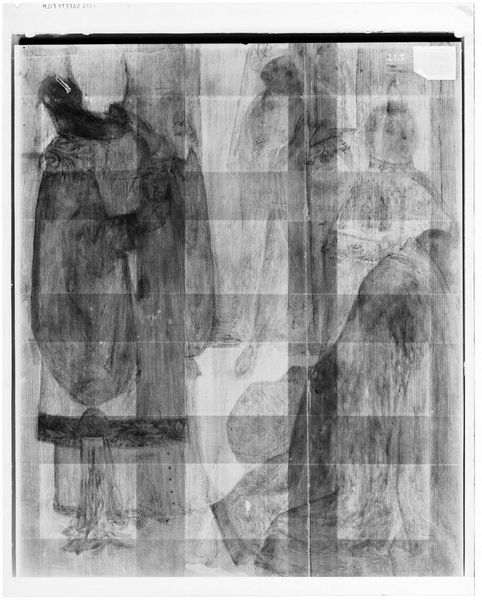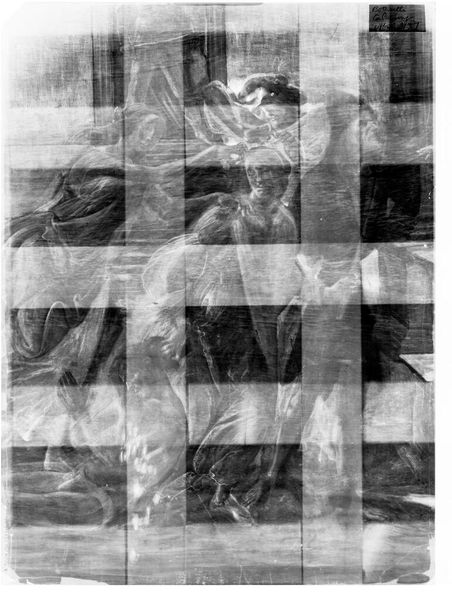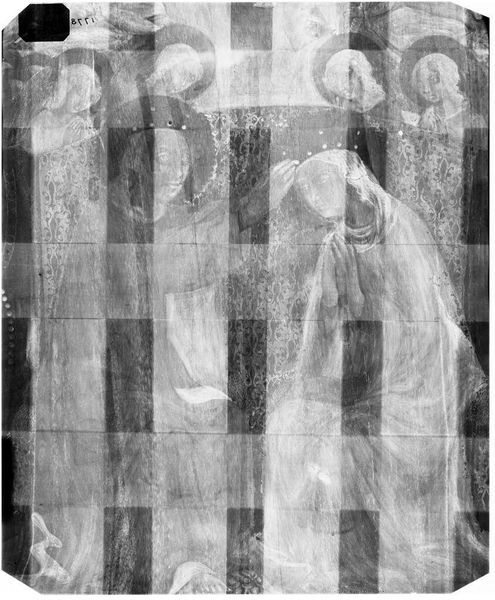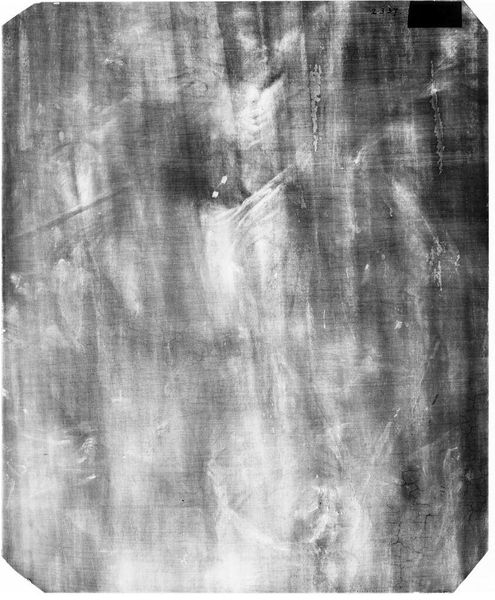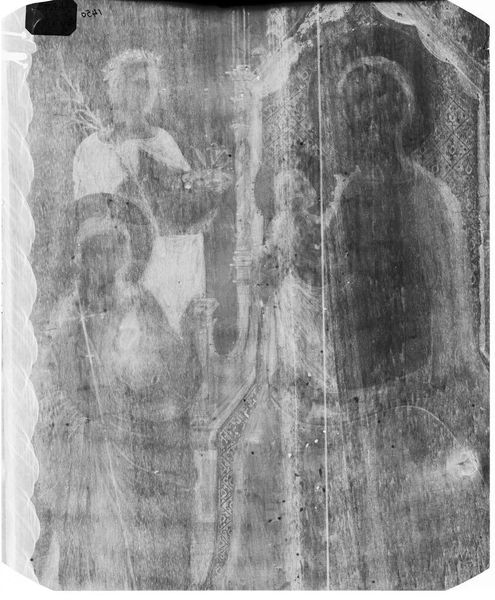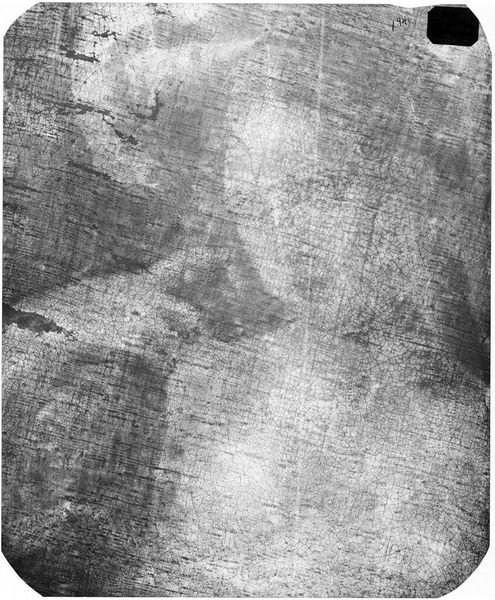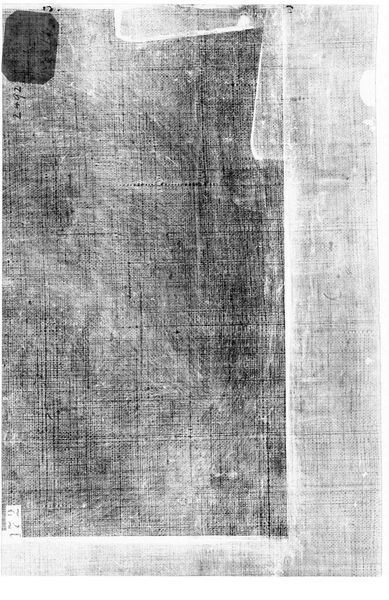
Copyright: CC0 1.0
Curator: This is an X-radiograph of "St. Jerome," originally by Rogier van der Weyden, housed here at the Harvard Art Museums. It’s fascinating how modern technology allows us to peer beneath the surface of a masterwork. Editor: My first impression is one of ghostly unveiling. There's a beautiful tension between the visible and the hidden, a sense of time layered upon time. Curator: Exactly! X-rays strip away the color and the surface detail, revealing the underdrawing and the artist's process. It gives us insight into the evolution of the composition, almost like an archaeological dig. Editor: It also disrupts the traditional narrative of the artwork itself. We're forced to confront the materiality of the piece, the layers of paint and the support beneath, rather than just the saint's story. Curator: Indeed, seeing the internal structure highlights the enduring power of the Saint Jerome archetype. Even stripped bare, the symbolism persists. Editor: And in this stark form, we see how constructed these images are. The act of painting becomes visible, no longer a seamless illusion. A new truth emerges. Curator: It’s a reminder that art history is always evolving, always offering new perspectives. Editor: Absolutely. This X-ray invites us to question the very nature of what we consider "art," revealing its constructed nature and inherent historical context.
Comments
No comments
Be the first to comment and join the conversation on the ultimate creative platform.
